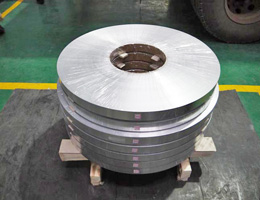
1050 aluminum strip contains more than 99.5% aluminum and is a type of industrial pure aluminum. 1050 aluminum strip has the characteristics of high plasticity, corrosion resistance, good electrical conductivity and thermal conductivity, but low strength. 1050 aluminum strip is a product in the pure aluminum plate series, and its chemical composition and mechanical properties are similar to those of the 1060 series products. It is basically replaced by 1060 aluminum strip in applications.
1. High plasticity: 1050 aluminum strip has good plasticity and is easy to process into various shapes and sizes.
2. Good electrical and thermal conductivity: It has excellent electrical and thermal conductivity and is suitable for applications that require good electrical and thermal conductivity.
3. High corrosion resistance: 1050 aluminum strip has high corrosion resistance and is suitable for various corrosive environments.
4. Low density: The density of aluminum strip is only 2.71 g/cm³, which makes it advantageous in lightweight design.
5. Good weldability: It can be gas welded, argon arc welded and spot welded, but brazing is not suitable.
| Alloy | 1050 |
| Temper | F, O, H12, H14, H16, H18, H22, H24, H26, H28 |
| Thickness | 0.2-8mm |
| Width | 100-2650mm |
| Application | CTP/PS plate base, aluminum-plastic plate, lighting materials, battery explosion-proof valves, ear materials, etc. |
| Alloy | Si | Fe | Cu | Mn | Mg | Cr | Zn | Ti | Other:Each | Other:Total | Al |
|---|---|---|---|---|---|---|---|---|---|---|---|
| 1050 | 0.25 | 0.4 | 0.05 | 0.05 | 0.05 | - | 0.05 | 0.03 | 0.03 | - | 99.5 |
| Tensile strength σb (MPa) | 6-100 |
| Elongation δ/(%) | ≥23 |
| Elongation 50mm/(%) | ≥25 |
1. Full annealing: heating at 390-430℃; holding time 30-120min depending on the effective thickness of the material; cooling to 300℃ at a rate of 30-50℃/h, and then air cooling.
2. Rapid annealing: heating at 350-370℃; holding time 30-120min depending on the effective thickness of the material; air or water cooling.
3. Quenching and aging: quenching at 500-510℃, air cooling; artificial aging at 95-105℃, 3h, air cooling; natural aging at room temperature for 120h.